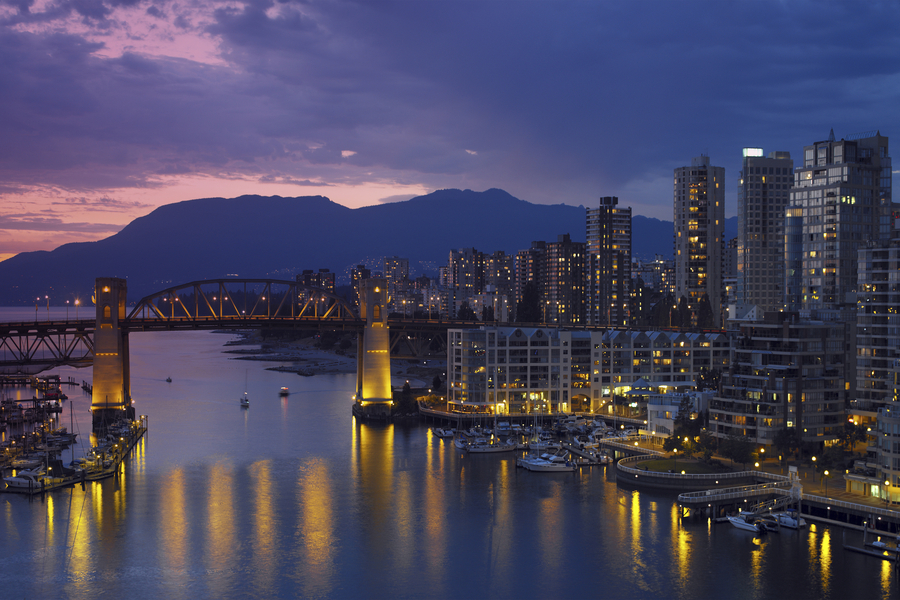Last Updated on January 24, 2024 by CREW Editorial
Toronto is one of the more well-known Canadian cities and was one of the earliest settlements established by the British after the Toronto Purchase in 1787. Its name most likely derives from the Iroquois word tkaronto, meaning “The place where trees stand in the water”.
Today, Toronto is the most populous city in all of Canada and is home to many important Canadian businesses and institutions. Although Ottawa is the country’s capital, many important dealings occur in Toronto, with large portions of the Canadian population living in the Greater Toronto Area.
Keep reading to see details on Toronto’s population and demographics, as well as some history of the population growth in Toronto and the surrounding regions.
Toronto Population Density Review
Toronto is the most populated city in Canada, situated in the Southern Ontario province. With a population of 2,794,356, Toronto has almost twice as many residents compared to Canada’s next most-populated city, Montréal. By 2035, experts expect to see a further 1 million residents settle in the Toronto region.
The Greater Toronto Area has a total population of 9,765,188. The vast majority of Canada is very sparsely populated. The average population density of Canada is 4 people per square kilometre. Compare that population density with the population density in Toronto at 4,559 people per square kilometre and you will see that Toronto is indeed one of the most populous areas in all of Canada.
Toronto is also a very multicultural city, with many ethnicities represented among its population. Toronto is home to various ethnic areas, including Little India, Greektown, Corso Italia, Chinatown, and Little Jamaica, due to its diverse demographics.
Toronto is a business and financial center. Generally regarded as the capital of the financial industry and financial sector of Canadian economies. It is home to specialized financial institutions and brokerages in Bay Street in its financial district. The Toronto Stock Exchange ranks seventh in terms of market value as a global stock. All five major Canadian banks, collectively termed the Big Five, are located in the city of Toronto. The area serves the media industry as well, serving as the headquarters for Roger’s Communications and Bell Media.

Toronto Population Growth and History
When Europeans first came to the Toronto area, the Wyandot people had recently been driven off by the Iroquois, who subsequently had been living there for centuries. The Iroquois were ousted by the Mississauga by 1701. Fort Rouille was built in the region by French traders in 1750, but it was abandoned nine years later during the upheaval of the French-Indian theatre of the Seven Years’ war.
The region experienced a significant inflow of British settlers during the American Revolutionary War, and the British negotiated the Toronto Purchase in 1787 to secure 1,000 square kilometres of territory in the region. The town of York became the seat of government for Upper Canada in 1793.
Between the 2011 and 2015 Toronto censuses, the metropolitan area Toronto estimated population rose by 4.46%. During the past two decades, the city’s population was booming and it has been compared with the population of other major cities in the country. Growth was also 4.77% in the province of Ontario and 4.67% in Victoria.
Despite this, growth is just about half as high as some specific towns: Edmonton increased by 142% and Calgary increased by 12.9%. Experts say the population will continue expanding throughout the Greater Toronto Area over the next couple of decades.
Between 2020 and 2022, the population growth in the city of Toronto metropolitan area has been sitting at just below 1% per year. The growth percentages have been steadily decreasing year over year since the 1990s.
With a population of 2.79 million compared to Chicago’s 2.7 million in 2013, Toronto overtook Chicago as the fourth-largest metropolis in North America. Toronto saw a 38,000 increase in population in 2013, while Chicago saw an 11,000 increase. More people are opting to remain in Toronto rather than move to the suburbs as a result of the city’s expanding economy and population.
Toronto has come a long way since it was settled by European colonists in the 18th century. Only 9,000 people lived there at the time of the 1812 war, and many of them freed African American slaves. The Great Irish Famine caused a significant increase in immigration to the city, which led to the Irish becoming Toronto’s largest ethnic group by 1851. This was the city’s first genuine population boom. More immigrants arrived in Toronto in the late 19th and early 20th centuries, including Poles, Russians, Chinese, and later Italians, French, Germans, and Jews.
Toronto Diverse Population Demographics 2022
More than half the residents of Toronto are members of a visible minority group. It represents nearly double the average percentage in the United States. It’s relatively similar to the number of minorities in Vancouver (45.3%), but is still significantly larger.
According to Statistics Canada English (12.9%), Chinese (12.0%), Canadian (11.3%), Irish (9.7%), Scottish (9.5%), East Indian (7.6%), Italian (6.9%), Filipino (5.5%), German (4.6%), French (4.5%), and Polish (3.8%) were the ancestry groups with the highest percentages. Portuguese, Jamaican, Jewish, Ukrainian, and Russian people are some other common ethnic groupings.
With 54.1% of the population practising Christianity, Catholicism is the second most popular religion in the city, followed by Protestantism (12%), Christian Orthodoxy (4.3%), and other faiths (10%). Islam (8%), Hinduism (5.6%), Judaism (4%), and Buddhism (3%), among others, are other widespread religions. A little more than a quarter of the people living in the city are atheists.
In Toronto, women outweigh men by a wide margin (52% women to 48% men).

Largest cities in the Greater Toronto Area and Around Lake Ontario
The city has 10 cities that have more than 100,000 residents and about 105,000 residents. Toronto has been the largest municipality in the GTA for many years. Mississauga is the next biggest town with 717,961 inhabitants in 2022. Other highly populated cities in the GTA include Brampton, Markham, Vaughan, and Richmond Hill.
The western shores of the nearby lake are occupied by a sizable urban network known as the Golden Horseshoe, which is mainly based around the cities of Toronto and Hamilton. On the Canadian side, ports can be found close to the St. Lawrence River exit in St. Catharines, Oshawa, Cobourg, and Kingston. Over 25% of Canadians, or nearly 9 million people, reside within the lake’s watershed.









